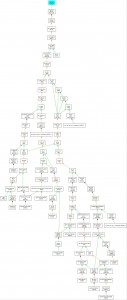There’s nothing like being associated with manifest power to pique the interest of mainstream media. And so it was when The White House, no less, hosted a breakfast on Innovation for Global Development. Announced at the breakfast was a new version of “the Germplasm Resources Information Network-Global (GRIN-Global), a powerful but easy-to-use, Internet-based information management system for the world’s plant genebanks”. Journalists who normally wouldn’t give GBDBH the time of day were suddenly queuing to explain why this was such a good thing. And among the people they queued for was the Global Crop Diversity Trust’s Luigi Guarino. Here’s the BBC World Service’s story. Luigi speaks at 1’21”
GRIN Global on the BBC World Service, Feb 18 2012
Suitably enlightened, forgive my cynicism when I wonder what prompted a web page about the International Crop Information System to suddenly bleep on my horizon-scanning radar. At first blush it looks like it does much the same job as GRIN-Global, but that can’t possibly be correct. It must do something slightly different — powerful, undoubtedly, but by the look of things not easy to use and not internet based — which I welcome in the name of diversity and the resilience that promotes.
